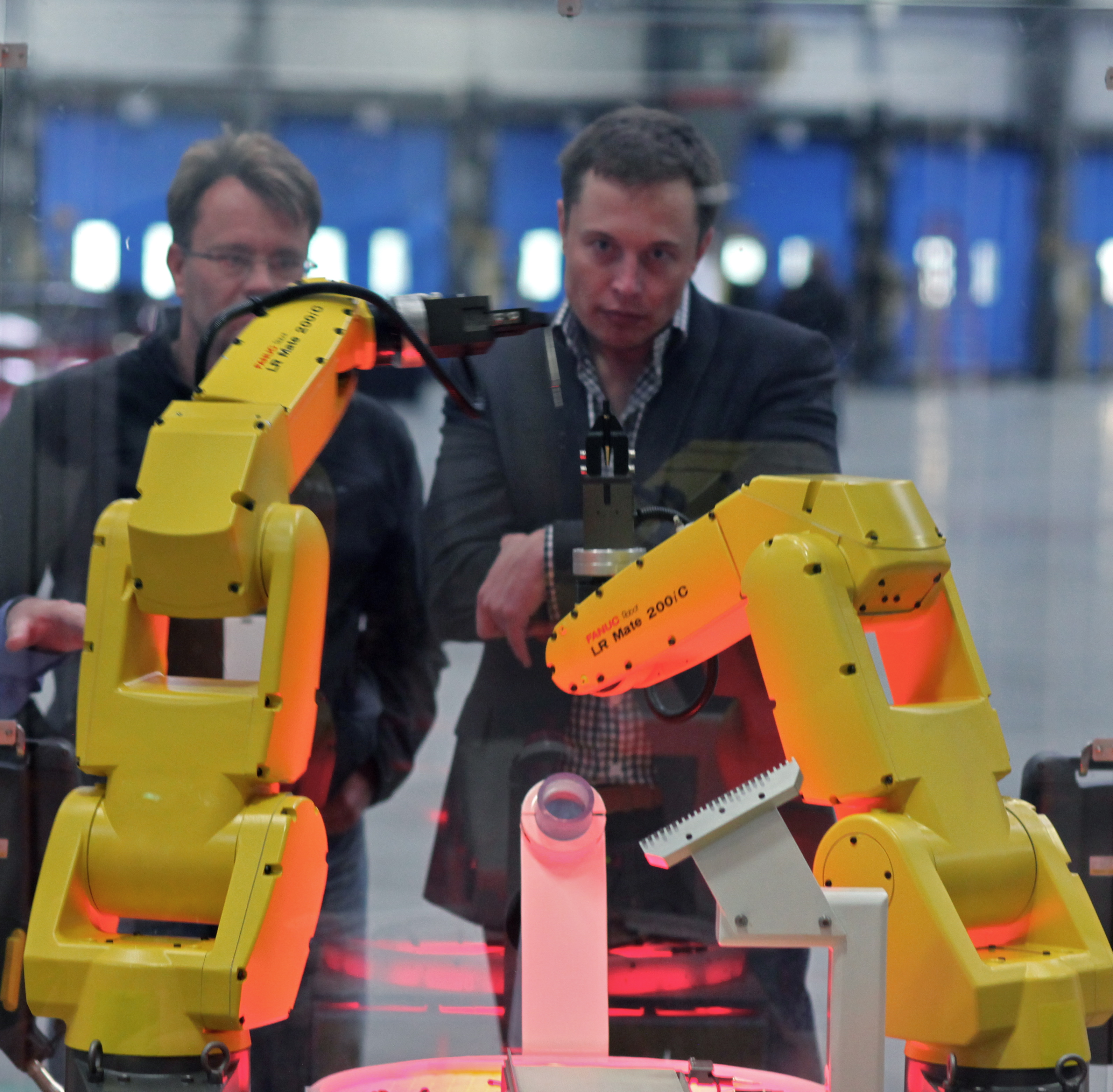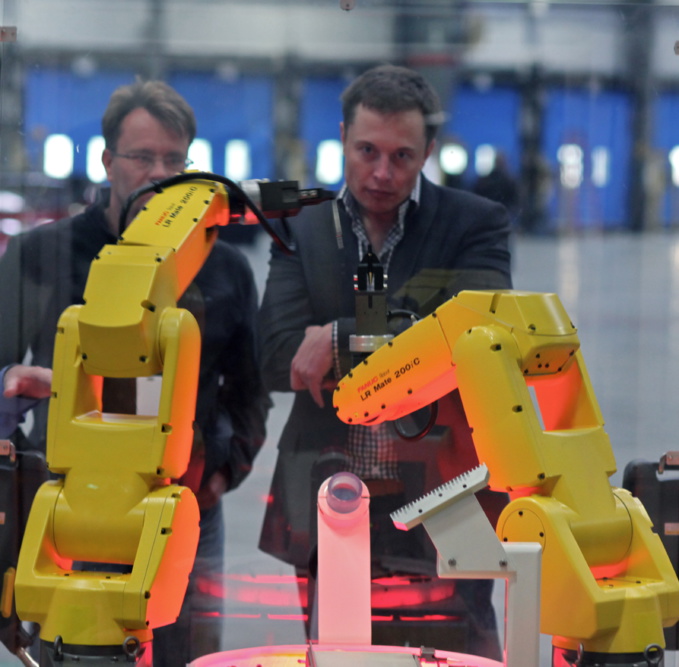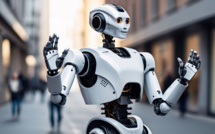According to South China Morning Post referring to a local official, number of employees at Foxconn factory in the county was cut down from 110 thousand to 50 thousand people as a result of the production automation.
"Most likely, other companies will follow this example", - he said.
China is pouring massive investment in robotic staff.
Representatives of Foxconn Technology Group have confirmed to BBC that the company has already automated many manufacturing processes. However, Foxconn is denying large-scale staff reductions.
"We are introducing robotic engineering and other innovative production technologies for the mechanical work, which was previously carried out by our staff. Through training, we enable employees to focus on elements of the production process with a higher added value, such as engineering design, process control and quality control" – they said in a statement.
"We will continue to use both automated and live labor in our manufacturing operations, and we plan to keep a significant workforce in China", - added Foxconn Technology Group.
Kunshan is the first county in mainland China, where GDP per capita reached $ 4 thousand. For seven consecutive years, Forbes has acknowledged it the country’s best region in terms of economic efficiency. However, the rapid industrialization affected the safety standards in the county. Along with costs reduction, it was one of the reasons why companies came to think about replacing people with robots. According to a state research, 600 major companies operating in Kunshan are now brooding such plans over.
Since September 2014, 505 factories in Dongguan district of Guangdong Province invested 4.2 billion yuan ($ 640 million) in development of robots to replace thousands of employees.
Economists had previously warned of the impact of automation on the world labor market. According to a study by Deloitte in collaboration with Oxford University, 35% of the jobs will be put under the threat of reduction in the next 20 years.
Computer-aided manufacturing occupies top management not only in China. The German manufacturer of sports apparel, footwear and equipment - Adidas group – is going to return part of the production from Asian countries back to Germany, entrusting robots with the work. It is reported by DW, citing the company's statement. The production automation made it possible to transfer the industrial facility back to Germany, the newspaper notes.
Production of the first trial lot (500 pairs) on ‘Speed Factory’ in the Bavarian Ansbach is scheduled to begin in autumn 2016. By 2017, Adidas intends to bring the volume up to 500 thousand pairs.
Since 1993, almost all production of Adidas clothing and footwear had been transferred to Asia, with exception for a factory in Scheinfeld, mostly makes soccer boots.
In his study, MIT economist David Autor found that computer-aided manufacturing is destroying middle class jobs, such as clerks or accountants, but create both high- and less-paying jobs. According to him, this is one of the reasons for the labor market polarization and stagnation of wages in the last 15 years in the United States. However, Autor says that economists do not worry that machines will soon replace humans: "The real problem I see is that automation leads to an increase in inequality."
Most new technologies can rather enhance work efficiency of employees, not replace them, says Autor and other experts. According to their claims, and the modern history of the economy, the markets will create a new, not yet existing jobs.
The automation process may be slower than many expect. Over the past 30 years, ATMs quickly spread throughout the United States, but the number of tellers in banks started to decrease only recently. There were 484 000 of them in the United States in 1985, and by 2007, the number decreased to just 472 000 (in this case, the banking industry has increased greatly in size). However, the number of tellers after the last recession was reduced to 361,000.
Scientists are carefully studying the issue as a breakthrough, that will allow robots to interact with people when performing complex tasks, is about to happen soon. According to a group of MIT scientists, the only barrier - it's computing power, but it will soon be overcome. Others believe that researchers are still far from being able to translate common sense, attitudes skill in code lines. And without this, the computer power is useless.
sources: bbc.com, wsj.com, dw.de
"Most likely, other companies will follow this example", - he said.
China is pouring massive investment in robotic staff.
Representatives of Foxconn Technology Group have confirmed to BBC that the company has already automated many manufacturing processes. However, Foxconn is denying large-scale staff reductions.
"We are introducing robotic engineering and other innovative production technologies for the mechanical work, which was previously carried out by our staff. Through training, we enable employees to focus on elements of the production process with a higher added value, such as engineering design, process control and quality control" – they said in a statement.
"We will continue to use both automated and live labor in our manufacturing operations, and we plan to keep a significant workforce in China", - added Foxconn Technology Group.
Kunshan is the first county in mainland China, where GDP per capita reached $ 4 thousand. For seven consecutive years, Forbes has acknowledged it the country’s best region in terms of economic efficiency. However, the rapid industrialization affected the safety standards in the county. Along with costs reduction, it was one of the reasons why companies came to think about replacing people with robots. According to a state research, 600 major companies operating in Kunshan are now brooding such plans over.
Since September 2014, 505 factories in Dongguan district of Guangdong Province invested 4.2 billion yuan ($ 640 million) in development of robots to replace thousands of employees.
Economists had previously warned of the impact of automation on the world labor market. According to a study by Deloitte in collaboration with Oxford University, 35% of the jobs will be put under the threat of reduction in the next 20 years.
Computer-aided manufacturing occupies top management not only in China. The German manufacturer of sports apparel, footwear and equipment - Adidas group – is going to return part of the production from Asian countries back to Germany, entrusting robots with the work. It is reported by DW, citing the company's statement. The production automation made it possible to transfer the industrial facility back to Germany, the newspaper notes.
Production of the first trial lot (500 pairs) on ‘Speed Factory’ in the Bavarian Ansbach is scheduled to begin in autumn 2016. By 2017, Adidas intends to bring the volume up to 500 thousand pairs.
Since 1993, almost all production of Adidas clothing and footwear had been transferred to Asia, with exception for a factory in Scheinfeld, mostly makes soccer boots.
In his study, MIT economist David Autor found that computer-aided manufacturing is destroying middle class jobs, such as clerks or accountants, but create both high- and less-paying jobs. According to him, this is one of the reasons for the labor market polarization and stagnation of wages in the last 15 years in the United States. However, Autor says that economists do not worry that machines will soon replace humans: "The real problem I see is that automation leads to an increase in inequality."
Most new technologies can rather enhance work efficiency of employees, not replace them, says Autor and other experts. According to their claims, and the modern history of the economy, the markets will create a new, not yet existing jobs.
The automation process may be slower than many expect. Over the past 30 years, ATMs quickly spread throughout the United States, but the number of tellers in banks started to decrease only recently. There were 484 000 of them in the United States in 1985, and by 2007, the number decreased to just 472 000 (in this case, the banking industry has increased greatly in size). However, the number of tellers after the last recession was reduced to 361,000.
Scientists are carefully studying the issue as a breakthrough, that will allow robots to interact with people when performing complex tasks, is about to happen soon. According to a group of MIT scientists, the only barrier - it's computing power, but it will soon be overcome. Others believe that researchers are still far from being able to translate common sense, attitudes skill in code lines. And without this, the computer power is useless.
sources: bbc.com, wsj.com, dw.de



















